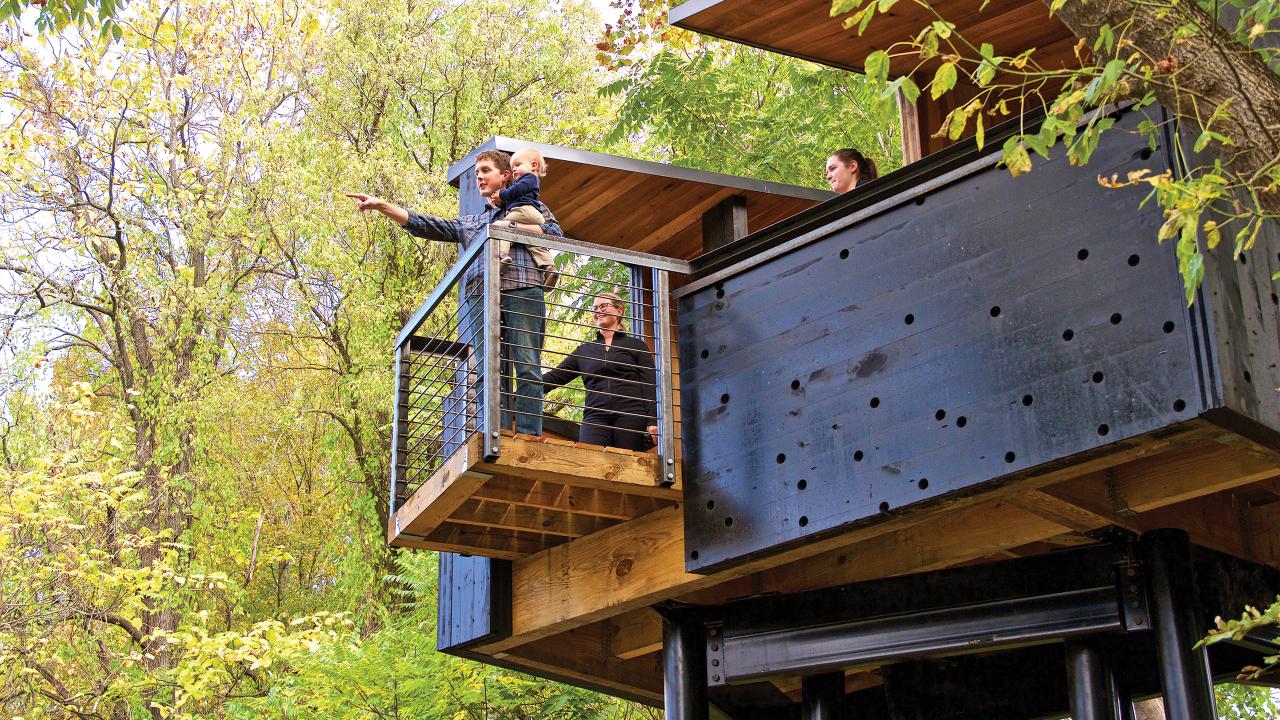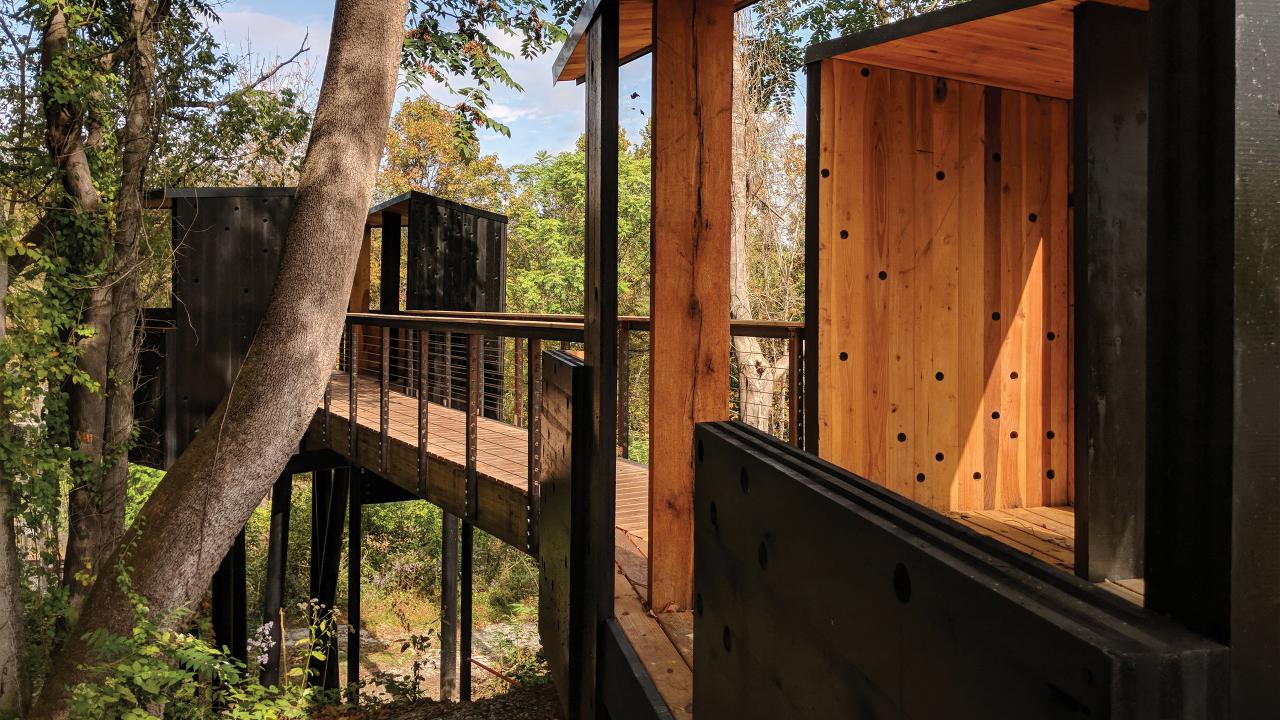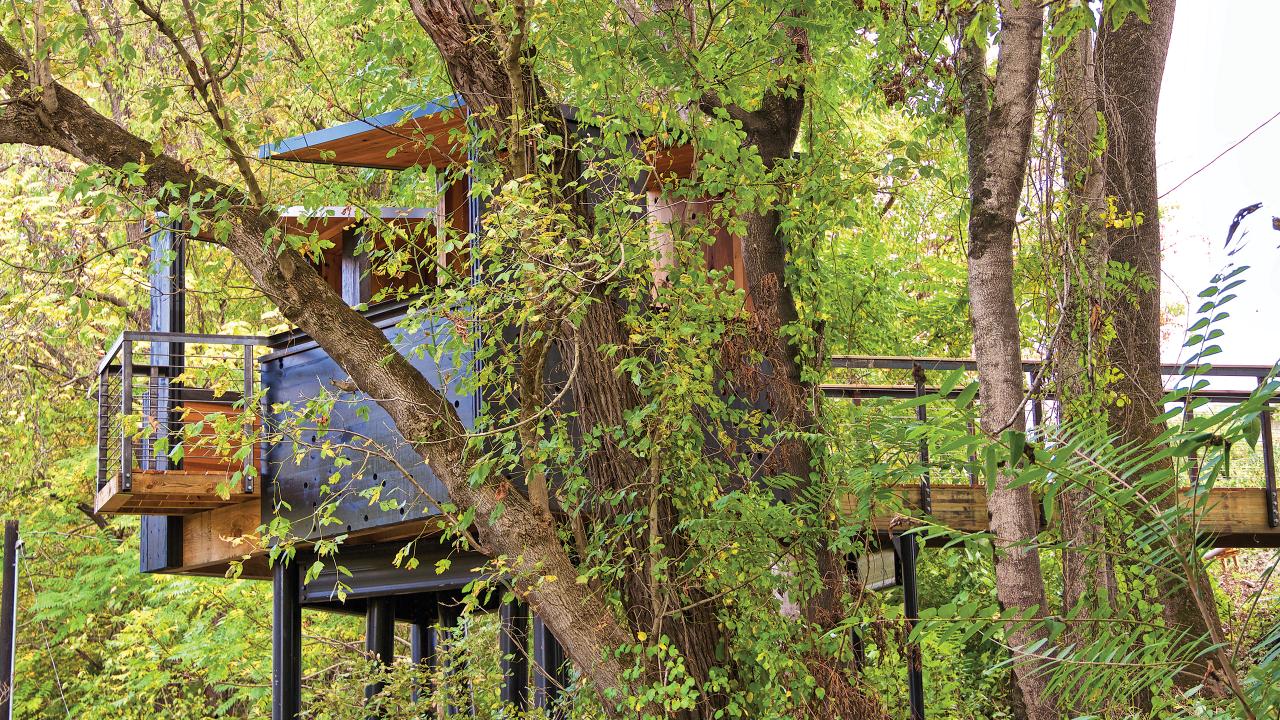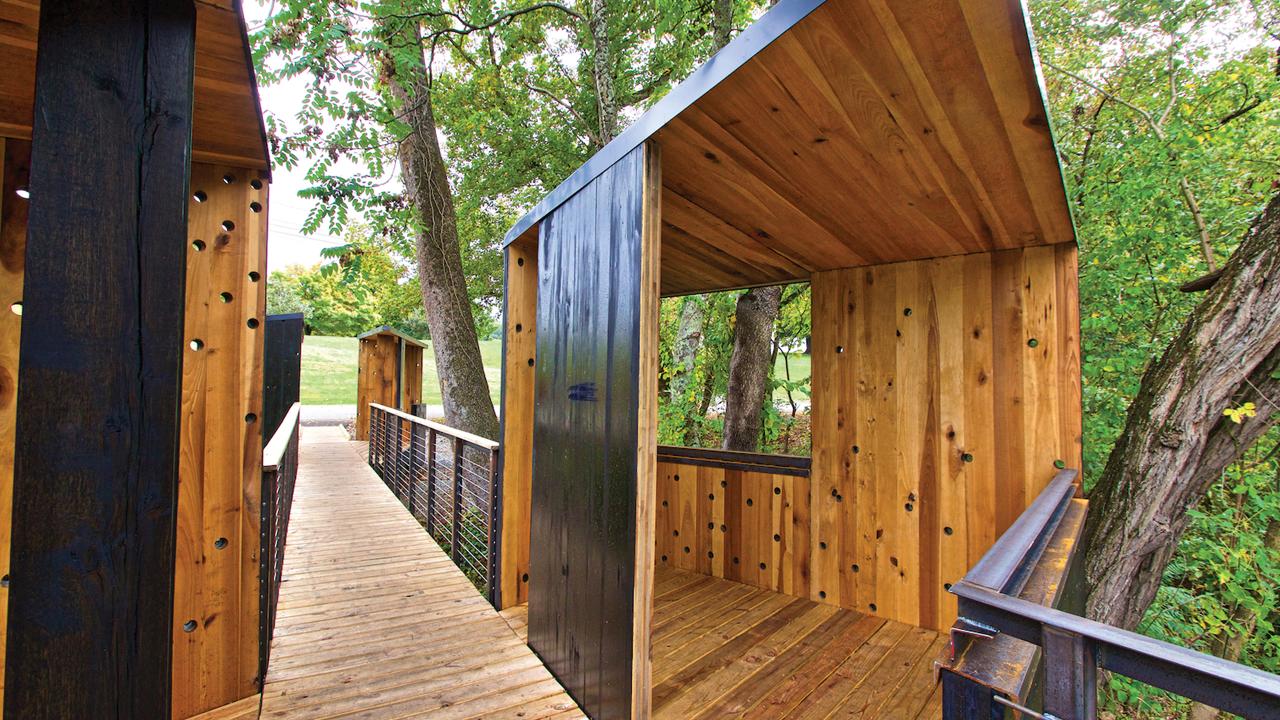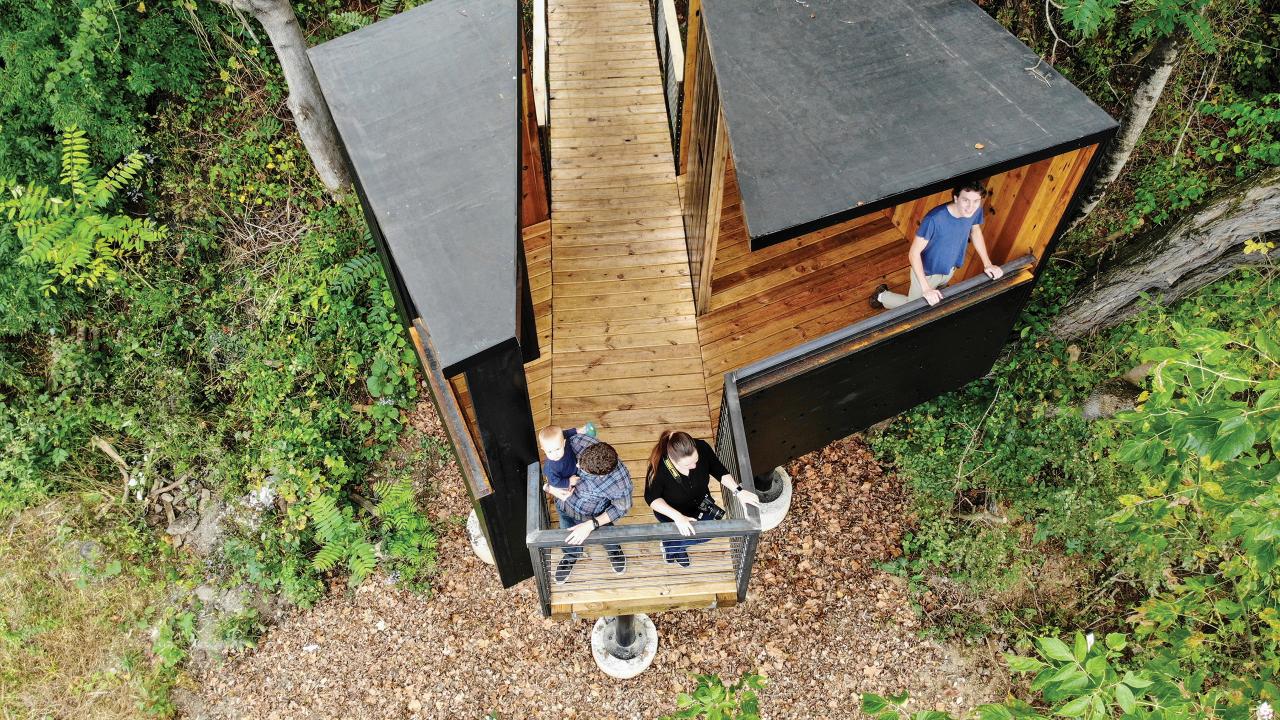Architecture students create train observation tower in American tulipwood CLT
Architecture students at Virginia Tech have created a train-watching observation tower made from American tulipwood CLT in Radford, Virginia. The project was the first to use prefabricated CLT modules in the U.S. and is meant to reference the city’s railway history.
In 2018, a diverse team of project collaborators and consultants including architects, sustainable biomaterial experts, structural and civil engineers, custom fabricators, and university students, among others, came together in the designing and constructing of the New River Train Observation Tower, a piece of a comprehensive tourism development plan undertaken by the city tourism department. To conform with the client’s brief that the tower needed to look both backwards and forward –relate to the city’s railroad history while also showcasing the city’s movement into the 21st century – the team selected an emerging timber technology, hardwood cross-laminated timber (CLT), as the primary construction material due to a variety of material advantages. Because CLT was not easily accessible in the region, particularly hardwood CLT, the team not only undertook the design of the observation tower itself, but also sourced locally grown tulipwood and coordinated the material development and construction logistics of locally-pressed hardwood CLT panels. The team also had to establish material transport and fabrication logistics due the general lack of infrastructure for CLT in much of the Eastern United States. The cutting-edge project established a series of benchmarks for mass timber construction in Virginia and the United States:
- The first project globally to use prefabricated, hardwood CLT modules
- The first project in the United States to use prefabricated CLT modules
- The first project in the United States to use structural hardwood CLT as a building enclosure system
- The first project in Virginia and the Southeastern United States to use hardwood CLT
The architects used recently developed wood science and engineering data for tulipwood (Yellow Poplar) cross-laminated panels to coordinate the local production of CLT with proper mechanical performance. The tulipwood was locally sourced in Virginia and the panels were pressed, cut and digitally altered by the Southern Virginia Higher Education Center in South Boston, Virginia.
Architecture students began the project in design studio with two architecture faculty being responsible for design development, construction details, logistics, coordination of multiple consultants, material acquisition and budget. The structure is a simple arrangement of a bridge connecting two volumes. A second entry point is from a set of unused railroad-track rails that have been excavated by the project team to become a tree identification/nature walk. At its highest point, the structure stands 28 feet above grade with the walkway at 18 feet high. The CLT volumes are coated in a black pine tar in reference to the nearby railroad ties, both by sight and smell, and to help the structure blend into the forest. The volumes are perforated by CNC and hand-drilled holes to reduce the volume’s perceived mass, to mimic the forest’s dappled lighting effects, and to provide playful lines-of-sight for the viewer to the forest despite the user’s height. The design of the observation tower is meant to provide an engaging anchor project for the City of Radford’s tourism development plan.
In the autumn of 2018, the project won recognition from the American Institute of Architects (AIA) as an unbuilt project.
